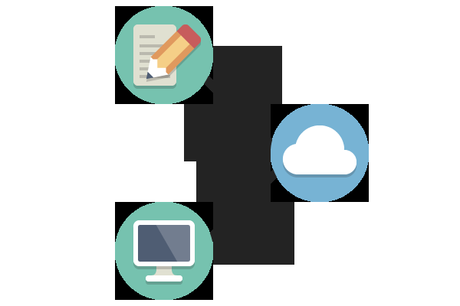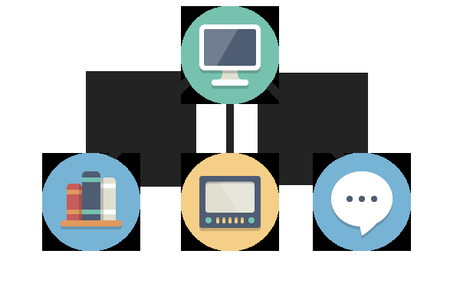At the closing table, borrowers meet an almost overwhelming stack of documents, normally for the first time. Then, they’re asked to read and digest it’s content in the average time of an hour. This slew of disclosures is determined by a combination of federal, state, local, and company-specific regulations that are often longwinded and difficult to understand. As a result, stress levels and confusion skyrocket for all parties involved.
Last April, the Consumer Finance Protection Bureau (CFPB) took an invested interest in the closing process, specifically in the adaptation of electronic closings. In an article entitled “Mortgage Closings Today” CFPB Director Richard Cordray demonstrated a desire to push the industry toward an electronic closing platform. In it, he stated, “we hypothesize that technology-enabled electronic closings (eClosing) solutions have the potential to reduce errors, limit surprises, lessen anxiety, and create more time and opportunity for consumers to understand their mortgage and make more informed decisions.”
An eClosing platform refers to a mortgage closing that relies on technology for stakeholders to view and sign documents electronically.
Although a number of technology vendors have already created eClosing solutions, the adoption rate among lenders remain low. A 2013 study produced by Xerox found that roughly 10% (up from 7% in 2012) of mortgage industry employees are currently incorporating eSignature and eClosing technology. Moreover, 35% of creditors responded they had “no plans” to implement an eClosing solution.
Electronic closing is not a new concept. Fannie Mae closed its first mortgage electronically as early as 2000. In a March 2007 interview, Fannie Mae director for the single-family mortgage business Mark Oliphant stated that broad adoption was expected in as little as three to five years. Despite Fannie Mae’s enthusiasm, however, the housing market crashed and resources were directed toward surviving it. As the market has recovered, it appears there has been a renewed interest in an online and electronic platform.
While the Bureau is aware that simply moving a closing packet into digital format does not make the closing table any less stressful, they recognize that a electronic closing can help overcome key challenges borrowers may face during the closing process.
1. The Timing of Document Delivery
Errors and delays during the closing process frequently play a role in the frustrations borrowers experience. According to a study produced by the CFPB, 43% of respondents cited the timing of document delivery as a key challenge that lead to their negative mortgage experience.
The Challenge
The variables surrounding document delivery are many. Document packages pass through many hands in the loan process before they reach the closing table. Any delayed deliveries can cause a ripple effect that potentially pushes back each subsequent step. Many parts of the package do not reach the borrower until the closing meeting. The result means that borrowers must meet, read and digest an entire package in one sitting and normally in the space of an hour-long meeting.
The Solution
The Bureau hopes that a paperless system will change how and when borrowers receive information. This electronic delivery solution is believed to increase the flexibility of providing many of the documents to the consumer prior to closing since there is no time delay to mail documents. This early delivery allows borrowers to digest and consult with professionals at home and on their own time, reducing anxiety and eliminating surprises at the closing table. The adaptation of eClosings could also reduce time and burden for stakeholders in the industry, which could mean borrowers save money.
Giving documents space on the cloud allows borrowers to retrieve them at will. Customers who utilize this solution will be able to reference and locate their documents without keeping a physical copy.


2. Education of the Mortgage Process
27% of participants in the CFPB study mentioned that no one was available to explain the process or content to them during closing. Another 18% noted that key participants such as their loan officers were difficult to reach at the time.
The Challenge
Borrowers often feel the power imbalance at closing and recognize their lack of relevant knowledge. The general lack of communication and education plays a large role in the stress during a mortgage transaction. The pressure to sign the documents often overrides their desire to understand the forms. Borrowers are left feeling like they’re without an advocate. Consumers also frequently complain that closing packages are difficult to understand. 38% of respondents cited confusing documents as a cause of their negative mortgage experience. This is no surprise as disclosures are often written with the bulletproof tenacity of a lawyer and not the average borrower.
The Solution
Educating borrowers can help them play a more active role in their mortgage. eClosings may provide opportunities to embed educational tools into the closing process. The ability to highlight key information and link to additional resources before and during the closing is believed to help borrowers feel comfortable at the closing table. At minimum, closing becomes less of a faith-based process where borrowers lean on their attorney or accept blindly.
Benefits to the Industry
A paperless delivery system can help the mortgage industry reduce operational errors and increase data quality compared to a manual system, which potentially provides monetary and legal benefits. eClosing can also significantly reduce the costs associated in paper and storage, which charges the mortgage industry millions of dollars annually. The dirge of printing and scanning documents is also minimized, which the CFPB estimates will save companies 6,000 sheets of paper a year. Finally, the reduction in closing costs due to eClosing can help reduce prices for customers and encourage competition.
An eClosing solution has the potential to create more efficiency in the mortgage industry even after the closing process. The CFPB estimates that post-closing activities can contribute up to 30% of the cost of the loan, which can be automated through an eClosing platform. Such a system also allows investors to review eClosing files prior to purchase, decreasing the time to fund the loan.
Perhaps the modern closing process has never been better articulated than by former Deputy Secretary of the Treasury Neal Wolin: “Here I was – former general counsel of the Treasury, former general counsel of a Fortune 100 financial services company – asking my lawyer to help me through 100 pages of incomprehensible, turgid gobbledygook.”
It’s clear that technology has the potential to make the closing process less arduous. As the subject is studied more, the CFPB hopes to lead the industry toward an era of electronic adaptation. In the upcoming year, the Bureau will be launching a pilot program to test the ability of eClosing solutions to education, empower, and simplify the closing process.
Ultimately, their efforts will never succeed if leaders in the marketplace do not drive top-down initiatives to move toward more electronic solutions. Technology offers new opportunities that can simplify and automate the mortgage process, but without genuine enthusiasm, thoughtful analysis, and a promising willingness it may be all for not.
